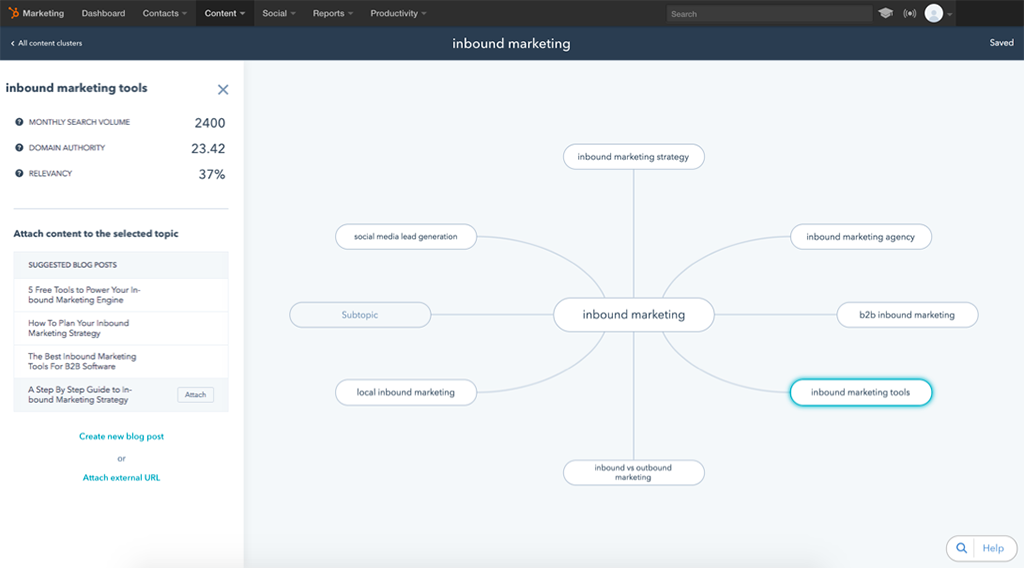National Law Review research shows that more than nine out of 10 people (96%) "use a search engine to seek legal advice.” With evidence like that, it’s clear your customers are already finding legal services online. So how do you make sure your customers are finding you? That’s where a Search Engine Optimisation (SEO) strategy comes in.
With the right legal marketing know-how from the experts at Digital Media Stream, SEO planning will become simple and efficient. Sure, it’s competitive out there, but with our five SEO marketing tips, your business can:
- Drive quality traffic to your website
- Boost brand awareness
- Increase visibility to prospects and leads
- Build credibility
Let’s become visible!
Understand Your Audience
We’ll reveal our list of five tips for creating an effective SEO strategy for your law firm shortly. But before we dig deep on SEO, we need to make sure you understand the audience you’re trying to target.
To understand who your audience consists of, you need to create your ‘Buyer Personas’. Buyer personas are fictional representations of the ideal customers for your business, based on real-world data.
If you have not already you can jump onto our free Buyer Persona Template to make sure you are getting the most out of this article.
Now: onto our five tips for optimising your company’s keywords.
Tip #1. Do Your Keyword Research
For context, let’s explore what keyword research is. At its core, keyword research involves the study of the actual search terms that people enter into search engines.
For law firms, keyword research should help you understand which terms your customers would use to find your business or those of your competitors. If you know who you’re up against and the keywords they target, you’ll know WHAT you’re up against.
The crucial search terms you want to understand for your business are two-fold:
- Short-tail keywords: These are smaller terms that are harder to rank for and highly competitive. Think “injury claims lawyer.”
- Long-tail keywords: These consist of broader terms which are more specific and more likely to allow for a quick ascent on Google. Think “the best injury claims lawyer in Manchester.”
Both short- and long-tail keywords need to be interconnected in your strategy. Short-tail is meant to play the long game. It will be able to do that when you create related long-tail keywords that reinforce it. Think of long-tail keywords as the bricks, and short-tail keywords as the overall wall.
When you earn immediate advances toward page 1 of Google for an optimised long-tail term, your linked short-tail term is in a stronger position to advance as well.
Plan Your Keywords with Pillars & Clusters
To see SEO results more quickly you need your keyword and content strategy to focus on long-tail keywords. When building these keywords, they should sound organic and related to a spoken-word search. They’ll add elements like a location or positive/negative tone (such as the terms “best” and “manchester” that we used above). A good rule of three for developing your long-tail keywords should be specific, targeted, and clear.
One method for doing this is the Pillar & Cluster method. This is the very latest in SEO principles and it is available as a Beta stage tool from HubSpot:

This tool allows you to lay out your pillar - the short-tail keyword - in the middle. The bubbles that surround this pillar are clusters, with each one representing a specific topic addressing a long-tail keyword.
With the Content Strategy tool, you're able to effectively plan your keywords. Now, we'll show you how it can influence your content strategy.
Tip #2. Create a Content Strategy
Great content is critical for driving visits to your website. In a HubSpot survey, 72% said relevant content is the most effective SEO tactic. The HubSpot Content Strategy tool from Tip #1 is great for determining relevant content topics based on your keyword research.
Look at your clusters in your Content Strategy. These are the topics to produce content for - each one of them can become a blog, web page, infographic, or video.
If you are writing a blog, you should ensure that you have optimised the title, URL, and meta descriptions (a professional marketing specialist will always ensure these are optimised). Google loves original and authoritative content so make sure that any content is educational and engaging.
Do this for each cluster, and you’ve got a content strategy built for SEO around your long-tail and short-tail keywords.
To really boost your ‘central’ keyword topic you should create a dedicated page with optimised content around that particular word or phrase. Link the content you have produced as part of the cluster back to the main web page based on the central term and you will be flying up the Google rankings in no time.
Tip #3. Remember Local SEO
Local SEO refers to optimisation based on the specific geographic locations of your law firm. 30% of mobile searches are related to location, so it’s imperative that you specify in your keyword plan the local terms you want to optimise.
Here are some of the ways you can create local SEO for your law firm:
- Find Time for a NAP: NAP is an acronym for Name, Address, and Phone number. In the footer of your website, including these details as crawlable HTML text is crucial.
- Contact Page: Your website contact page offers you the chance to use maps to help customers find you. You can also reinforce your NAP details, as well as social media links and other related contact details for departments and in-house specialists. All of these are great for SEO.
- Verify your Business on Google: Adding your law firm to ‘Google My Business’ is a must-do. This strategy will help you show in search results for specific services nearby. When your business is verified by Google, your visibility on the world’s leading search engine will improve.
Here are some other ways to expand your local profile.
- Citations: What’s going on at your law firm? New hires? New clients? Utilising public relations for local publications (both offline and online) are a useful local SEO strategy that builds your business as a local authority.
- Google+ Local: If you have more than one office, you can create and verify a unique Google+ local page for each location. Make sure that each local page is joined up with your master Google+ page to bring it under one umbrella. Otherwise, you’ll have more work to do on the next point.
- Remove any out of date versions: Inconsistent listings of a brand on Google+ or business listing pages are common. Google does not like conflicting information so make sure addresses and phone numbers match across the web.
- Create customer review portals: Reviews are increasingly a large factor for companies to be ranked on a search term. More than half (52%) of consumers say a good customer review means they will be more likely to turn to a local business. The more positive ones you have, the likelier you are to see your rankings improve for local SEO. As well as Google My Business, other well-known review portals include as TrustPilot, Which? and Feefo.
By employing the right local SEO tactics you can put your law firm in a better position to become an authority in your location.
Tip #4. Optimise for Mobile
Two out of three smartphone users (65%) look for the most relevant information when conducting a search. So there’s no getting around it: your website needs to be optimised for mobile and tablet platforms.
Google algorithms are constantly updating to ensure that mobile-friendly sites have more visibility in the rankings. With each update, Google wants to make sure that websites offer a seamless and responsive transition from desktop to mobile.
To be mobile friendly, remember:
- The need for speed: When it comes to mobile, users often get frustrated if pages are taking too long to load, and will eventually drop off and go elsewhere. Think of it as a twist on responsive design: the faster it loads, the more leads you can build.
- Simplify: A simple, clean design for mobile is paramount. Remember that the size of the screen is significantly reduced, so you need to make the most of the space you have to work with. Visibility and clarity of clickable buttons, for instance, are a big boost to mobile friendly design.
- Optimise images: Once upon a time, mobile web wasn’t ready for things like CSS and images. That’s no longer the case: optimised images for mobile and desktop alike paint a reliable picture of responsive your website truly is.
The statistics bear out the reality of a mobile-led world across all industries, including law firms. 31% of all law firm related website traffic comes through mobile search. Despite that, just one in three law firm websites are mobile optimised.
With this shift in browsing behaviour, the time is now for making sure your website is responsive, fast and agile.

Tip #5. Promote, Promote, Promote
You probably noticed earlier my mentioning the relevance of Google+ for local SEO. Social marketing actually plays a big role in your SEO strategy.
That’s because social media platforms are search engines to be reckoned with in their own right. In 2015, a quarter of all search on legal topics resulted in a visit to YouTube.
So how does social media help you optimise your SEO?
- As a traffic source: The more, the better, we always say. Target the right audiences organically on social media with the right content, and social media feeds can become a new source of traffic to your website. You can use thought leadership hashtags (usually best for Twitter, Instagram, and Facebook), groups (LinkedIn and Facebook) and communities (Google+) to target your content organically.
- For SEO: Google does not currently use the amount of followers or interactions as search factors. However, relevant traffic pushed to your website, from users who then stay on your site provides Google with data that your pages are relevant and can help to boost your overall SEO.
- Social media search: Tools like HubSpot social monitoring have been established to analyse your brand’s social engagement. You can search social media for trending and relevant topics. These can then feed into your keyword research and content strategy to assist with your SEO.
Here’s another remarkable fact: the average law firm client spends up to 16 minutes per hour on social media platforms. And the majority of law firms that ramped up their engagement on social media say they have grown their client base grow as a result.
With Digital Media Stream's five tips on effective SEO marketing, you can create the optimum SEO strategy for your law firm that generates the results you need. Be sure to review your strategy regularly, keep up to date with Google’s ever-changing algorithms, and follow our blog. You will soon reap the benefits in your lead generation.
For more inbound marketing tips, download our eBook, Future-Proof Your Marketing, to stay ahead of the curve.




